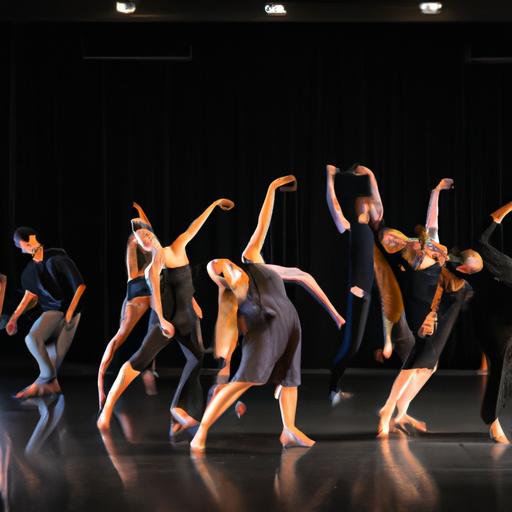Amaterasu Traditional Art Depiction: Unveiling the Beauty of Japanese Mythology
Introduction to Amaterasu Traditional Art Depiction
In the realm of Japanese mythology, Amaterasu, the radiant sun goddess, captivates hearts with her divine presence. As an integral part of Japanese culture, traditional art serves as a profound medium to depict the enchanting tales of deities like Amaterasu. In this article, we embark on a journey to explore the mesmerizing world of Amaterasu’s portrayal in traditional art and unravel the deep-rooted significance it holds.
A. Brief Overview of Amaterasu as a Deity in Japanese Mythology
Amaterasu, revered as one of the most important deities in Shintoism, personifies the sun and illuminates the heavens with her celestial radiance. According to ancient Japanese mythology, she is considered the ancestor of the imperial family, embodying qualities such as benevolence, beauty, and power. As we delve into the realm of traditional art, we encounter diverse artistic interpretations that breathe life into her captivating persona.
B. Explanation of Traditional Art and Its Significance in Japanese Culture
Traditional art in Japan transcends mere aesthetics; it is a profound reflection of the country’s rich cultural heritage. Rooted in centuries-old practices, this art form encompasses various mediums such as painting, calligraphy, and sculpture. It serves as a means to preserve historical narratives, express spiritual beliefs, and evoke a sense of harmony with nature. The intricate techniques and meticulous attention to detail make traditional art a captivating window into the soul of Japanese culture.
C. Introduction to the Focus of the Article – Amaterasu’s Depiction in Traditional Art
Within the realm of traditional art, Amaterasu’s depiction holds a prominent place. Artists throughout history have sought to capture her ethereal beauty and divine aura through their masterful creations. From delicate brushstrokes to intricate carvings, each artwork tells a unique story, offering a glimpse into the reverence and admiration bestowed upon Amaterasu. Join me as we delve into the captivating world of Amaterasu’s depiction in traditional art and discover the symbolism, meanings, and artistic interpretations that have shaped her portrayal over the ages.
Now, please proceed with Section 2.
History of Amaterasu Depiction in Traditional Art
Amaterasu’s depiction in traditional art spans centuries, tracing its origins back to ancient Japanese art forms. Let’s embark on a journey through time to explore the fascinating history of how artists have immortalized the radiant sun goddess.
A. Origins of Amaterasu’s Representation in Ancient Japanese Art
In the annals of Japanese art history, we find the earliest depictions of Amaterasu dating back to the prehistoric Jomon period. These primitive renderings, often found on clay vessels and figurines, reflect the reverence and awe bestowed upon Amaterasu as a celestial being.
As the centuries unfolded, Amaterasu’s representation evolved alongside the development of artistic expressions in Japan. The influence of Buddhism and Confucianism introduced new artistic techniques and iconographic elements, enriching the portrayal of Amaterasu within traditional art.
B. Evolution of Artistic Styles and Techniques Used to Depict Amaterasu
With the advent of the Heian period, a new wave of artistic expression emerged, characterized by delicate brushwork and vibrant colors. This era witnessed the creation of breathtaking hand scrolls, known as emaki, where artists skillfully depicted Amaterasu’s radiant presence amid celestial landscapes.
In subsequent periods, such as the Kamakura and Muromachi periods, traditional art underwent a transformation. Artists explored various mediums, including woodblock prints and ceramics, to portray Amaterasu’s divine grace. The meticulous attention to detail and intricate designs became hallmarks of Amaterasu’s depictions during this time.
C. Influence of Religion and Cultural Beliefs on the Portrayal of Amaterasu in Art
Religion and cultural beliefs played a pivotal role in shaping Amaterasu’s portrayal in traditional art. Shintoism, deeply ingrained in Japanese society, venerated Amaterasu as a deity embodying purity and fertility. This led artists to imbue their creations with symbolism and motifs associated with these attributes. The depiction of Amaterasu often incorporated elements such as the sun, celestial beings, and natural landscapes, symbolizing her divine connection to the world.
Moreover, cultural beliefs surrounding Amaterasu’s role as the ancestral deity of the imperial family influenced her portrayal in art. The regal and majestic qualities attributed to her were skillfully captured by artists, emphasizing her position as a revered figure in Japanese society.
Join me in the next section as we delve deeper into the symbolic meanings associated with Amaterasu’s depiction in traditional art.
Symbolism and Meanings Associated with Amaterasu’s Depiction
Amaterasu’s depiction in traditional art is steeped in symbolism, each element carefully chosen to convey deeper meanings that resonate with her divine essence. Let us embark on a journey to explore the intricate symbolism and the profound significance it holds in relation to Amaterasu.
A. Exploration of the Symbolic Elements Commonly Used to Represent Amaterasu
Artists have ingeniously incorporated various symbolic elements to portray Amaterasu’s radiant presence. The sun, naturally, takes center stage, representing her divine power and life-giving energy. The use of vibrant colors, especially shades of gold and red, symbolizes her warmth and illumination. Intricate details in her attire, such as phoenix motifs or celestial patterns, further emphasize her celestial lineage and connection to the heavens.
B. Interpretation of the Meanings Behind These Symbols in Relation to Amaterasu
Delving deeper into the symbolism, we uncover profound meanings associated with Amaterasu’s portrayal. The sun, an emblem of enlightenment and rebirth, signifies her role as the bringer of light and hope. The choice of colors signifies her benevolence and the life-sustaining energy she radiates. The phoenix, often depicted alongside Amaterasu, symbolizes resurrection and immortality, embodying her eternal nature and the cyclical nature of life.
C. Analysis of How Artists Convey Amaterasu’s Qualities and Characteristics Through Their Depictions
Artists skillfully capture Amaterasu’s qualities and characteristics through their depictions, transcending the realm of physical representation. The serene expression on her face portrays her benevolence and wisdom, evoking a sense of tranquility. The use of delicate brushstrokes or intricate details in sculpture highlights her grace and elegance. Through the meticulous portrayal of Amaterasu, artists invite viewers to connect with her divine essence and experience the awe-inspiring presence she embodies.
As we navigate the world of Amaterasu’s depiction in traditional art, we begin to grasp the profound symbolism and its meaning, allowing us to forge a deeper connection with this revered deity. Join me as we venture further into the realm of artistic interpretations and explore the varied representations of Amaterasu throughout history.
Now, please proceed with Section 4.
Different Artistic Interpretations of Amaterasu
Amaterasu, the radiant sun goddess, has inspired countless artists to breathe life into her divine essence through various traditional art forms. Let us embark on a journey to explore the mesmerizing world of different artistic interpretations that bring forth the beauty of Amaterasu.
A. Examination of Various Traditional Art Forms that Portray Amaterasu
Traditional art forms such as painting, sculpture, and even theatrical performances have served as conduits for artists to depict Amaterasu’s ethereal presence. Paintings, notably in the form of scroll paintings known as emaki, showcase vivid scenes of Amaterasu’s celestial realm, capturing her divine radiance and the awe-inspiring landscapes that surround her. Sculptors, on the other hand, skillfully carve wood, metal, or stone to manifest Amaterasu’s graceful form, paying meticulous attention to every intricate detail. Traditional performing arts like Noh and Kabuki have also offered platforms for actors to embody Amaterasu’s character, mesmerizing audiences with their captivating performances.
B. Comparison of Different Artistic Styles Used to Depict Amaterasu’s Physical Appearance
Artistic styles employed to portray Amaterasu often vary, reflecting the artistic preferences and cultural influences of different periods. From the elegant and refined Yamato-e style of the Heian period to the bold and vibrant Ukiyo-e style of the Edo period, each artistic style brings forth a unique interpretation of Amaterasu’s physical attributes. Some artists emphasize her radiant countenance and flowing garments, while others focus on capturing her regal presence and divine aura. The evolution of artistic techniques has allowed for a diverse range of visual representations that showcase the timeless beauty of Amaterasu.
C. Analysis of Regional Variations in the Artistic Representation of Amaterasu
As we explore Amaterasu’s depiction in traditional art, we encounter intriguing regional variations that reflect the diverse cultural landscapes of Japan. Different regions have developed their own distinct artistic traditions, resulting in variations in how Amaterasu is portrayed. For instance, in Kyoto, the ancient capital of Japan, artists draw inspiration from the refined courtly aesthetics, infusing elegance and grace into their depictions. On the other hand, artists in rural areas may incorporate elements of nature and folklore, bringing a distinct charm to their renditions. These regional variations add depth and richness to the tapestry of Amaterasu’s artistic representation.
Through various traditional art forms, artists have woven a vivid tapestry of Amaterasu’s divine presence, allowing us to immerse ourselves in the timeless beauty of her character. Join me as we continue to unravel the captivating world of Amaterasu’s depiction in traditional art and discover the symbolism and meanings that these artistic interpretations convey.
Now, please proceed with Section 5.
Influence of Amaterasu’s Depiction in Traditional Art on Contemporary Culture
Amaterasu’s ethereal presence in traditional art reaches far beyond the boundaries of ancient folklore. Her portrayal continues to captivate and inspire modern artists, breathing new life into her timeless essence.
A. Discussion of How Amaterasu’s Portrayal in Traditional Art Continues to Inspire Modern Artists
Amaterasu’s depiction in traditional art serves as a wellspring of inspiration for contemporary artists. Her divine qualities, such as beauty, strength, and wisdom, resonate with the artistic sensibilities of the present day. Through various artistic mediums, including paintings, sculptures, and digital art, modern artists reinterpret Amaterasu’s essence, infusing their unique perspectives and artistic techniques. By channeling the spirit of Amaterasu, these artists pay homage to the ancient traditions while forging new paths of creativity.
B. Examination of the Impact of Amaterasu’s Depiction on Popular Culture and Media
The influence of Amaterasu’s depiction in traditional art extends beyond the realm of the art world. It has permeated popular culture and media, captivating audiences around the globe. From movies and anime to video games and fashion, Amaterasu’s radiant presence can be seen and felt. Her portrayal has become an iconic symbol, representing the beauty and power of Japanese mythology. Through these diverse mediums, Amaterasu’s story continues to enchant and inspire people from all walks of life.
C. Exploration of the Role of Traditional Art in Preserving and Promoting Amaterasu’s Legacy
Traditional art plays a vital role in preserving and promoting the legacy of Amaterasu. As a medium deeply rooted in Japanese culture, traditional art serves as a bridge between the past and the present. It ensures that the stories and symbolism associated with Amaterasu are passed down through generations, fostering a sense of cultural continuity. Additionally, the prominence of Amaterasu’s depiction in traditional art raises awareness and appreciation for Japanese mythology, allowing her legacy to endure and thrive.
Section 5 captures the profound influence of Amaterasu’s depiction in traditional art on contemporary culture. Through inspiring modern artists, permeating popular culture, and preserving her legacy, Amaterasu’s captivating essence continues to leave an indelible mark on the world. Now, let’s move on to the final section, the Conclusion.
Conclusion
As we conclude our exploration into the captivating world of Amaterasu’s traditional art depiction, we are left in awe of the profound beauty and significance it holds. Through centuries of artistic interpretation, Amaterasu’s portrayal has evolved, reflecting the cultural, religious, and artistic influences of each era. The symbolism and meanings associated with her depiction have allowed artists to convey her divine qualities and inspire generations.
The enduring appeal of Amaterasu’s portrayal in traditional art extends beyond the realms of mythology and artistry. It continues to inspire contemporary artists, bridging the gap between ancient traditions and modern expressions. The impact of her depiction can be seen in popular culture and media, where her radiant presence resonates with audiences worldwide.
Traditional art plays a crucial role in preserving and promoting Amaterasu’s legacy. It serves as a testament to the rich tapestry of Japanese culture, reminding us of the importance of valuing and cherishing our artistic heritage. As we appreciate the masterful craftsmanship and profound symbolism in Amaterasu’s depictions, we are reminded of the intricate connection between art, spirituality, and human expression.
In this journey through Amaterasu’s traditional art depiction, we have witnessed the beauty and power of the sun goddess come to life through the hands of talented artists. Let us continue to celebrate and honor the enchanting tales of Amaterasu and other deities, keeping their stories alive for generations to come.
Now that we have reached the end of our exploration, I invite you to immerse yourself in the captivating world of Amaterasu’s traditional art depiction, a testament to the timeless allure of Japanese mythology and the boundless creativity of human imagination.
Thank you for joining me on this fascinating journey.






